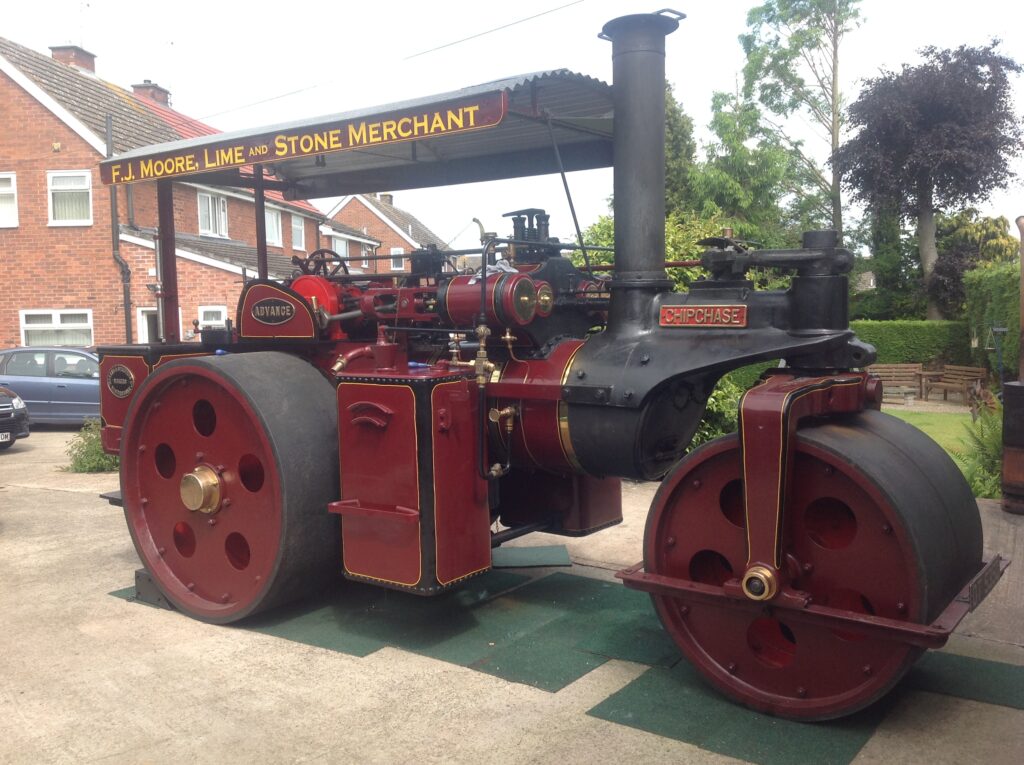“

Rolling Through Time: The Story of the Shadbolt Family’s Wallis & Steevens Steam Roller, “Chipchase” that would have worked in Hooe or Radford Quarry
When most people think of family heirlooms, they picture antique furniture, jewelry, or old photographs passed down through generations. For the Shadbolt family, however, their prized possession is something much bigger—and much louder: a 10-ton steam roller named Chipchase.
The Wallis & Steevens Road Roller No. 7931, affectionately known as Chipchase, isn’t just a relic of a bygone era; it’s a living, breathing (or rather, steaming) piece of history that connects the family with the golden age of steam engineering. Originally sold to F.J. Moore, a lime and stone merchant in Plymouth, this 1927 beauty now travels to around six steam rallies each year, where they proudly share its heritage with fellow enthusiasts.
F.J. Moore operated as a lime and stone merchant, specifically at Hooe Quarry in the Plymouth area. They supplied various materials such as lime for mortar and plastering, and stone for construction purposes.
The Star of the Show: Chipchase at Rallies
This particular steam roller, with registration No. OT 5350, has earned a reputation for its striking condition and faithful operation—just as dependable now as when it left the Wallis & Steevens factory almost 100 years ago.
But Chipchase is more than just a showpiece; it’s a testament to the ingenuity of early 20th-century engineering.
A Legacy of Steam Power: Wallis & Steevens
Wallis & Steevens. Founded in 1856 in Basingstoke, Hampshire, by Arthur Wallis and Charles Haslam, the company started as a manufacturer of agricultural machinery. It wasn’t until 1861 that they ventured into steam engine production—a decision that would establish them as one of the leading steam engine manufacturers in the world.
Charles Steevens joined the firm in 1862, and when Haslam retired, the company became Wallis & Steevens. They quickly gained a reputation for quality, with their traction engines becoming particularly popular. By 1927, when Chipchase was built, Wallis & Steevens had mastered the art of steam roller production, creating advanced models like this one, known for their power and reliability.
Their steam-powered machines played a crucial role in building Britain’s infrastructure, from laying roads to aiding the war effort. During World War I, Wallis & Steevens supplied road rollers and manufactured bomb cases for the War Department, demonstrating their adaptability and importance in wartime production.
As steam engines began to be replaced by internal combustion engines in the 1920s, the company shifted its focus, producing the successful “Advance” motor roller series—Chipchase being a prime example. The firm continued production until the 1960s when urban redevelopment in Basingstoke forced its closure.
Keeping History Alive
Today, Chipchase remains a rare example of this engineering legacy, lovingly preserved and maintained by the Shadbolt family. While they enjoy taking it to rallies and sharing its story with the public, there’s something even more special about knowing they are helping to keep this piece of history alive. After all, it’s not just a machine; it’s part of a broader story of innovation and craftsmanship that defined an era.
Whether you’re a steam enthusiast or simply curious about the past, the next time you see Chipchase at a rally, take a moment to appreciate the engineering brilliance that has kept it rolling for nearly a century.
Photo of Wallis & Steevens Road Roller No. 7931 “ChipChase” with the kind permission of J. Shadbolt.